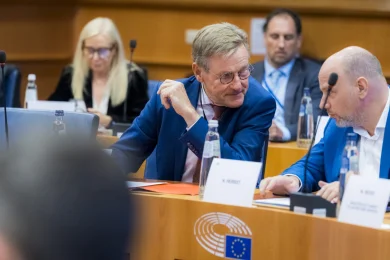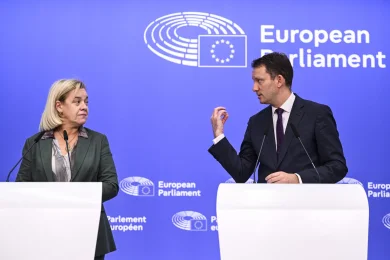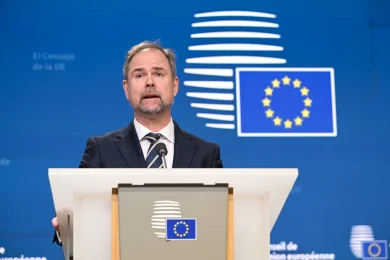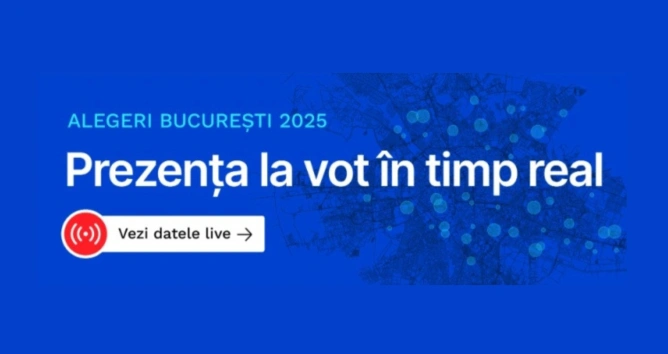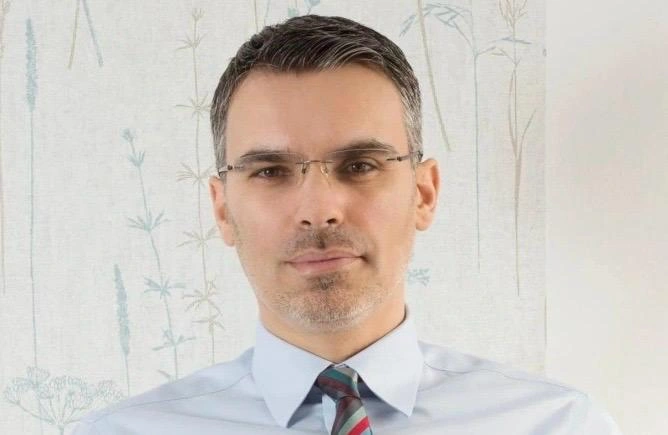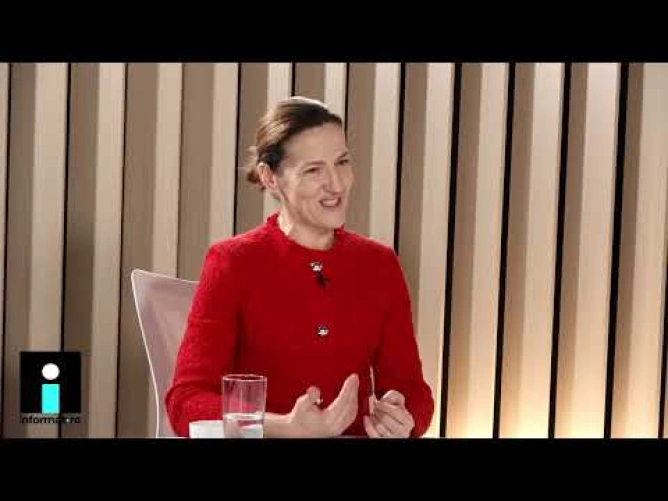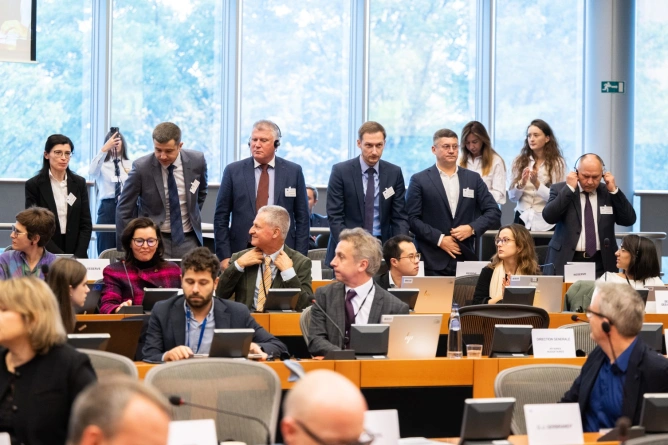
In a meeting room in Brussels, filled with files, laptops, and screens with graphs, the MEPs debate one of the most technical yet sensitive topics of European politics: the EU's common budget. For most people, it seems like a bureaucratic exercise thousands of kilometers away. In reality, these negotiations determine whether a highway is built, whether a school receives new equipment, or whether a farm can access funds to modernize its production. The Multiannual Financial Framework, the seven-year plan that sets out how EU money is spent, is not just about numbers but rather about the priorities of a Europe at a crossroads. How much does Europe invest in people and how much in industry? How much goes towards competitiveness and how much towards cohesion? Ultimately, it is a discussion about what kind of Europe we want to finance.
The functioning of the European Union and its instruments depends on a solid and well-thought-out budget. But how is this budget constructed, who decides it, and what programs does it target?
The European budget is a reflection of the compromise between solidarity, competitiveness, and strategic autonomy. MEP Victor Negrescu, Vice-President of the Budget Committee (BUDG) in the European Parliament, insists that "the European budget directly influences how Europe will look in the future and indicates where the EU can add value. Its impact goes beyond simple fund allocation, as it defines the priorities and development model of the Union."
What is the EU budget?
The budget of the European Union functions as a common financing tool through which member states pool some of their resources to support projects and policies of European interest, from infrastructure and agriculture to educational programs like Erasmus and external actions.
Currently, about 70% of the EU budget comes from national contributions based on Gross National Income (GNI), 10% from VAT, and the rest from traditional resources, such as customs duties.
The EU budget is planned, broadly speaking, through the Multiannual Financial Framework (MFF), a seven-year agreement negotiated years in advance between member states, the European Parliament, and the Commission. It sets the spending ceilings and priorities, within which the annual budgets are subsequently adopted.
The mechanism was introduced for the first time in 1988, through the Delors I package, which established the current principles of multiannual budget planning.
Why is there a seven-year budget?
The seven-year MFF provides stability, predictability, and strategic planning. An annual budget would be too volatile for large-scale European projects that require long-term investments, such as infrastructure, research, agriculture, or digitalization.
The seven-year duration is also a political compromise: it allows adaptation to the institutional cycles of the Parliament and the Commission, but provides enough continuity to implement complex programs like Horizon Europe or the Common Agricultural Policy (CAP).
Moreover, the MFF provides a stable framework for financial commitments, allowing member states and beneficiaries (regional authorities, universities, NGOs, etc.) to plan their activities and investments with certainty.
How is the EU budget financed?
The EU budget is financed from own resources and must be balanced (without borrowing for current expenditures). The main source is the contribution based on the Gross National Income (GNI) of each member state, supplemented by the contribution based on VAT and traditional resources (customs duties on imports from outside the EU).
Other resources are added, such as contributions for unrecycled plastic waste, as well as revenues from fines, interest, contributions from third countries, and annual balances. The Union also has flexibility instruments – reserves for emergencies, such as the Solidarity Fund or the Humanitarian Aid Reserve, used in case of major crises (energy, migration, war).
Separately, NextGenerationEU (NGEU), created to boost the European economy after the COVID-19 crisis, has been financed through joint EU loans on international markets. These loans will be repaid by 2058, and the associated interest represents an additional pressure on future budgets.
Who decides the budget?
The budgetary process begins with a proposal from the European Commission, which drafts the budget proposal. This is then examined and negotiated by the Council and the European Parliament, which can modify it and must reach a common agreement to adopt it. Expenditures are directed towards different policies and programs, such as the Common Agricultural Policy, cohesion funds, Erasmus+, Horizon Europe, or external support mechanisms.
The EU budget is also a battleground between institutions: the Commission proposes, the Council, dominated by net contributor states, seeks fiscal prudence, while the Parliament defends funding for social and cohesion policies.
In the 1980s, tensions between the European Parliament and the Council complicated the annual budgetary procedure, generating blockages and an increasing gap between available resources and real needs. In response, the European Community, as it was then called, established a multiannual planning mechanism aimed at making the budgetary process more predictable and efficient, now known as the Multiannual Financial Framework (MFF). Since then, the MFF has become the norm.
Pressures on the current MFF
The period 2021–2027 is quite special. The current MFF faces strong pressures on the ceilings: inflation and new needs arising after adoption, long-term support for Ukraine, migration, energy, and strategic technologies.
For the first time, the geopolitical dimension directly influences budget allocations, from defense and energy to macro-financial support for Ukraine. "The cohesion of the community bloc is essential for the unity of the European Union. Without this European solidarity, the EU risks being unable to face new challenges. We need a smart cohesion policy that integrates current transformations and reduces disparities while simultaneously strengthening the competitiveness and adaptability of regions," states MEP Victor Negrescu, a member of the Budget Committee in the European Parliament. In parallel, NextGenerationEU remains an exceptional and temporary post-pandemic recovery package, financed through EU loans on the markets, whose central pillar is the Recovery and Resilience Facility (RRF), implemented through national plans with milestones and targets.
The future of the MFF
On July 16, 2025, the European Commission presented the proposal for the MFF 2028–2034, a larger budget (almost €2,000 billion, ~1.26% of the EU's GNI) and more flexible than the current one, designed as a long-term investment plan for competitiveness, security, prosperity, and strategic autonomy. It is the first European budget developed in a context of global geopolitical confrontation and redefinition of the economic role of the Union.
The new project marks a paradigm shift compared to previous budgets. The key element is simplification based on the PNRR model: each state would follow to develop unified National or Regional Partnership Plans that coalesce cohesion, CAP, and other instruments (migration, security, environment), with clear objectives, reform conditionalities, and respect for the rule of law.
The focus will shift from redistribution to strategic investments in industry, clean energy, and digital technologies, under a future European Fund for Competitiveness. Regarding revenues, the Commission proposes new own resources, such as contributions from CBAM (the carbon border adjustment mechanism), a share from the taxation of large companies, and other sources, to reduce pressure on national budgets and finance priorities, including the repayment of NGEU debt.
However, many of these resources are politically blocked; the OECD agreement on the taxation of multinationals has not yet been ratified by all member states. As expected, criticisms have not been long in coming. They target the size and architecture of the budget, the new own resources that are difficult to accept politically, possible cuts to agriculture and cohesion, as well as underfunding of climate objectives. Critics also warn that the pressure for the repayment of NextGenerationEU debt and the capping of cohesion funds could affect European solidarity, especially in Central and Eastern Europe.
The process is, however, a long one. Negotiations are taking place between the Council (member states) and the European Parliament and may last until 2026–2027, for the new budget to come into force on January 1, 2028. Legally, the MFF Regulation is adopted by the Council by unanimity, after the consent of the Parliament. The MFF remains a major test of the balance between solidarity and fiscal responsibility.
Relevance for Romania
Romania is among the main beneficiaries of cohesion funds and CAP, with a total allocation of approximately €46 billion in the current MFF, to which over €28 billion is added through the National Recovery and Resilience Plan (PNRR).
In Victor Negrescu's view, "Romania must, first and foremost, ensure a financial allocation as consistent as the one we currently benefit from, in real terms, meaning an amount that at least grows with inflation. We must protect the N+3 rule, fight for the commitment to increase subsidies for farmers, and maintain consistent allocations for less developed regions. Last but not least, it is essential that in future European programs, including those dedicated to competitiveness, there is at least a national pre-allocation for Romania."
Romania's traditional position in negotiations remains favorable to maintaining a strong cohesion and agricultural policy, but the future budget risks reorienting funds towards competitiveness and security. Romanian authorities, the Ministry of Finance, the Ministry of Foreign Affairs, the Permanent Representation to the EU, will need to support national interests in the context of new conditionalities related to reforms and respect for the rule of law.
https://2eu.brussels/articol/analize/cadrul-financiar-multianual-ratiune-mize-viitor
